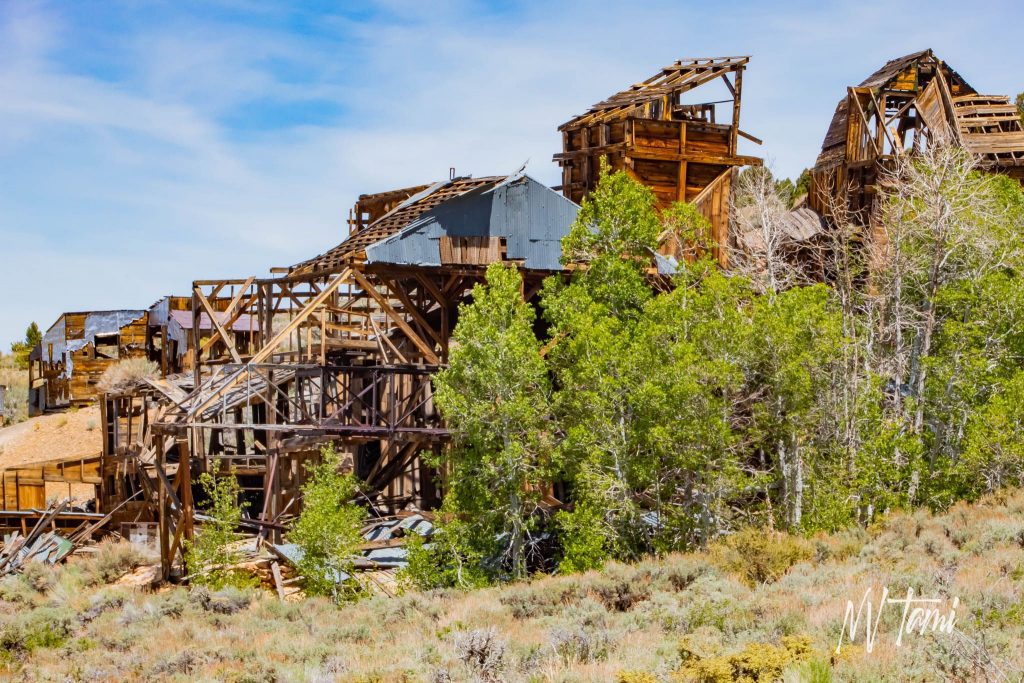
In 1900 Stephen Kavanaugh was hired to excavate a gold vein that ran along a ridge 2.5 miles southwest of Masonic. The site overlooks Bridgeport Valley from an 8600′ mountain perch. Stephen established the Chemung Mine in 1909, naming it after his hometown of Chemung, Illinois. As Stephen was an employee, he did not receive a share of the mine’s profits.

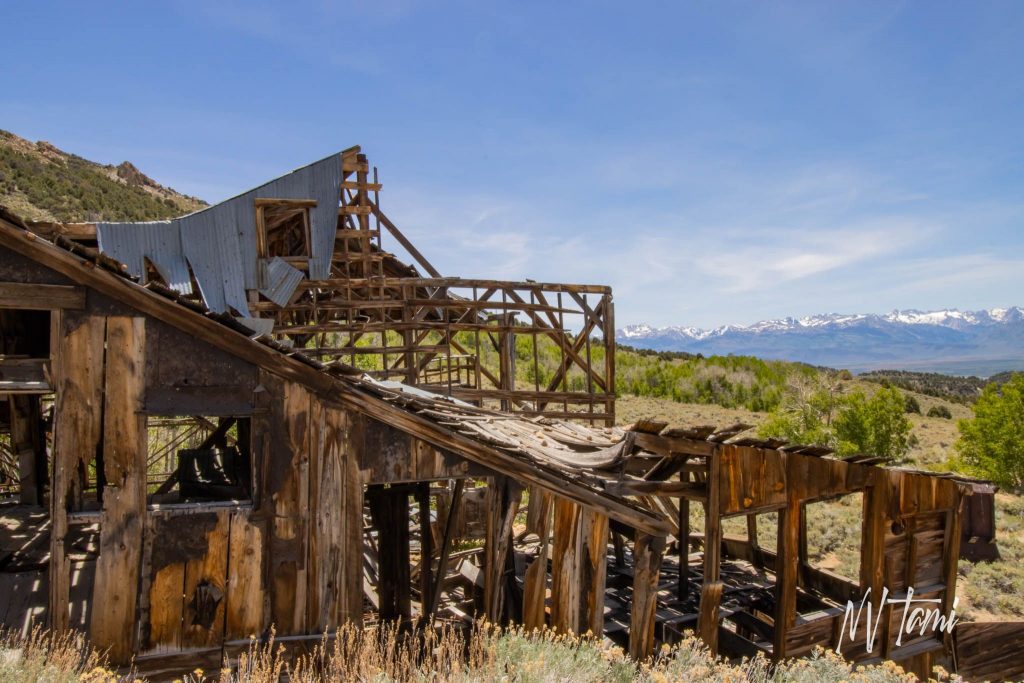
Chemung was a productive mine but overshadowed by nearby Bodie. Nevertheless, in 29 years of operation, Chemung produced over $1 million in gold. Ore was processed on-site, then shipped to Bodie for smelting.
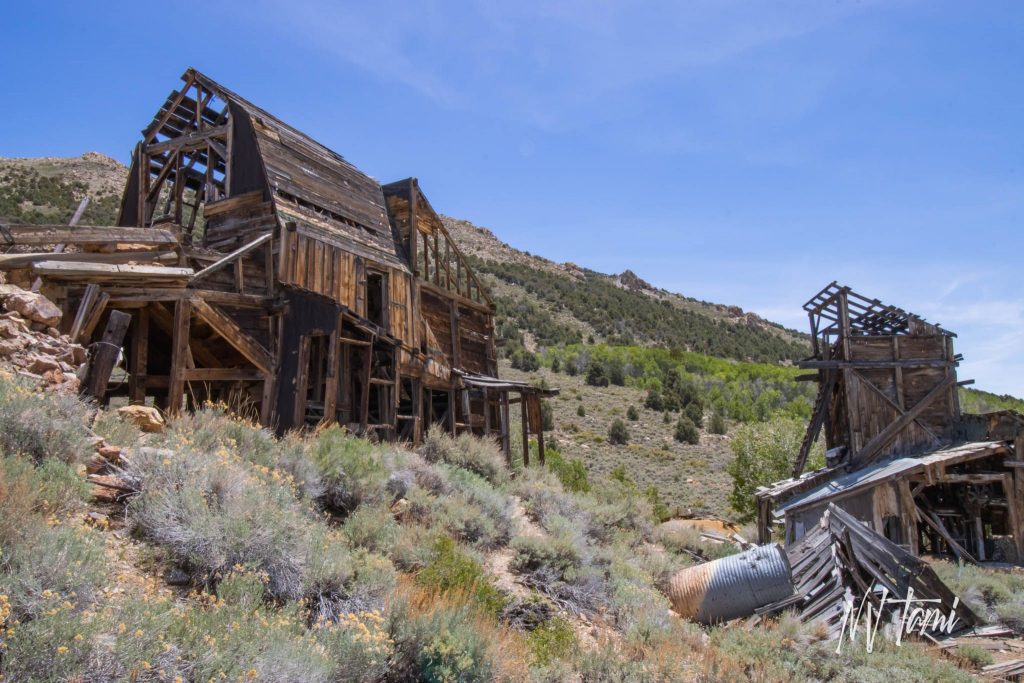
Chemung consisted of a mill, mine offices, bunkhouse, and general store. There were multiple legal issues relating to land ownership and the mine lease. The mine was torn down and rebuilt three times. The remaining structures are newer as they use round head wire nails and corrugated aluminum siding.
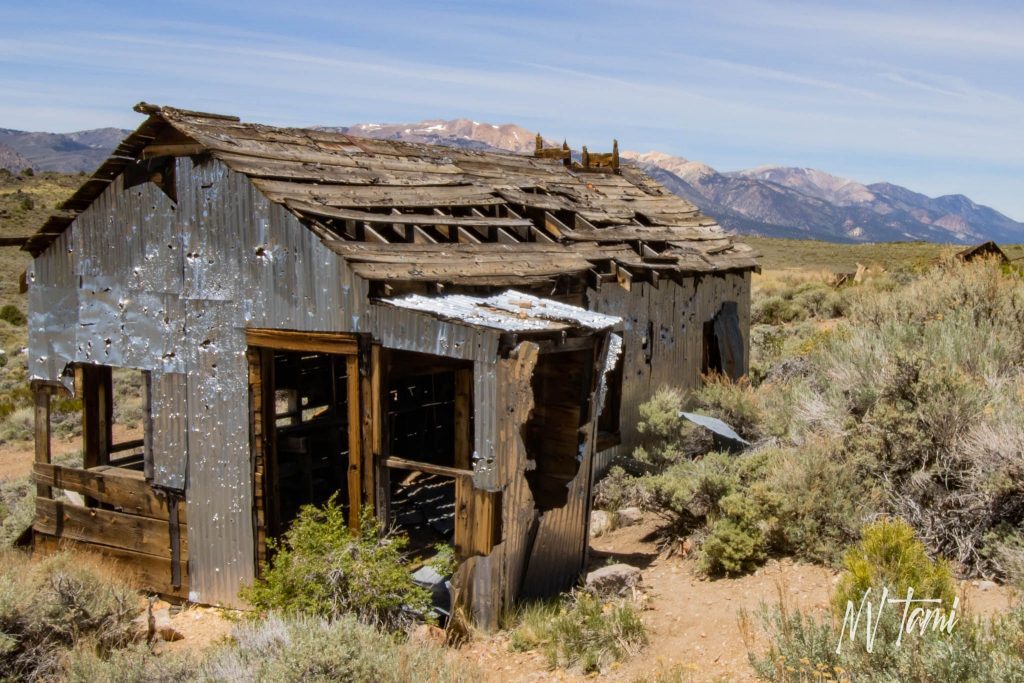
Chemung was abandoned in 1938. During the 1950s and 60’s Elton “Heinie” Heinemeyer worked the mines with no significant results.
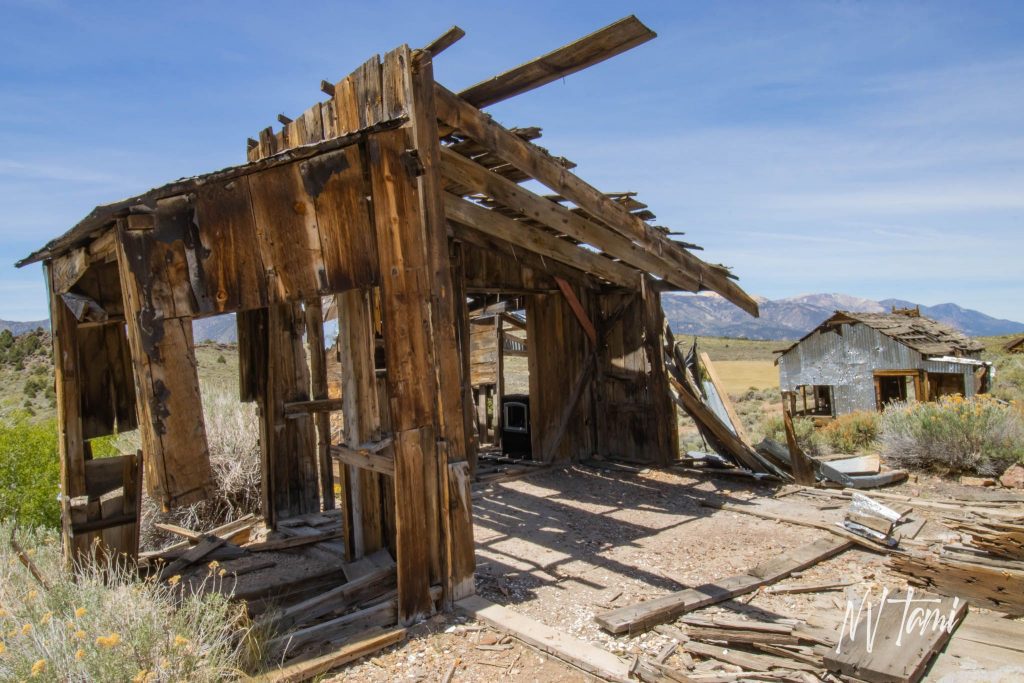
Due to the relatively easy access to Chemung, much of the machinery has been looted. Many of the buildings and remaining machinery have been vandalized, leaving bullet holes throughout the site.
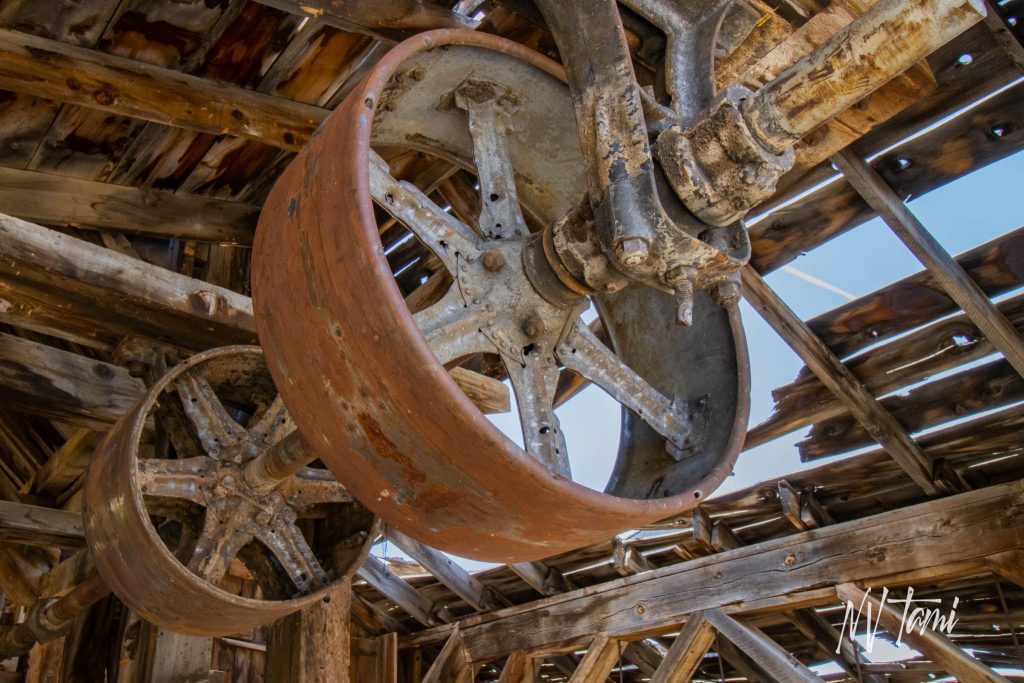
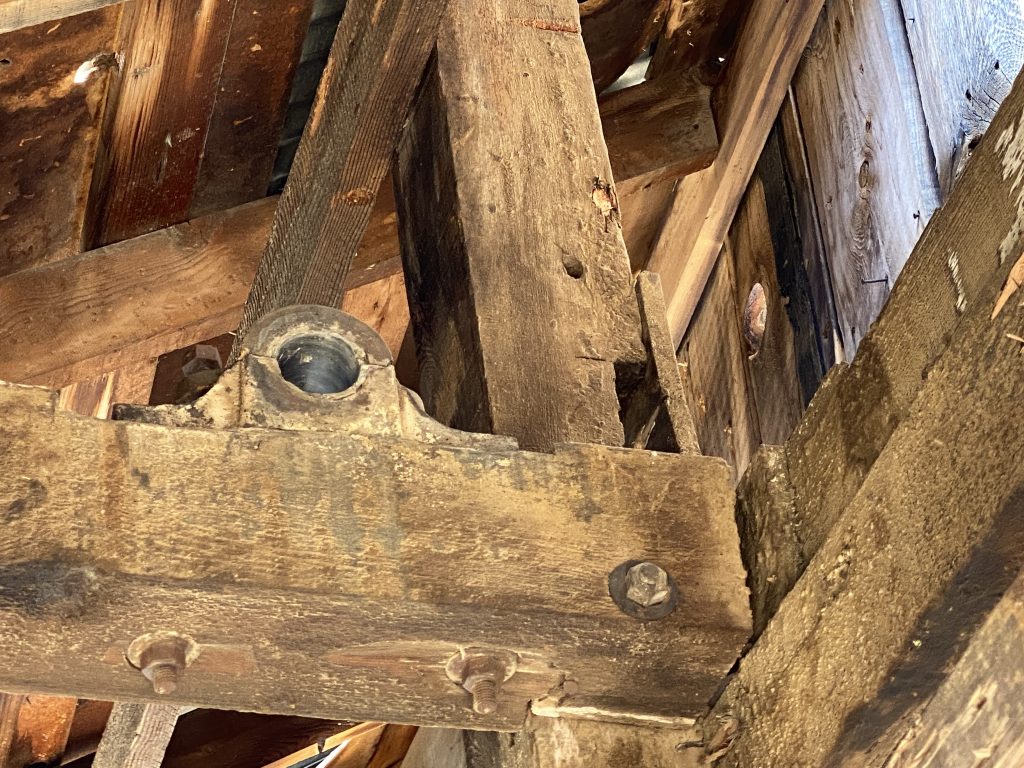
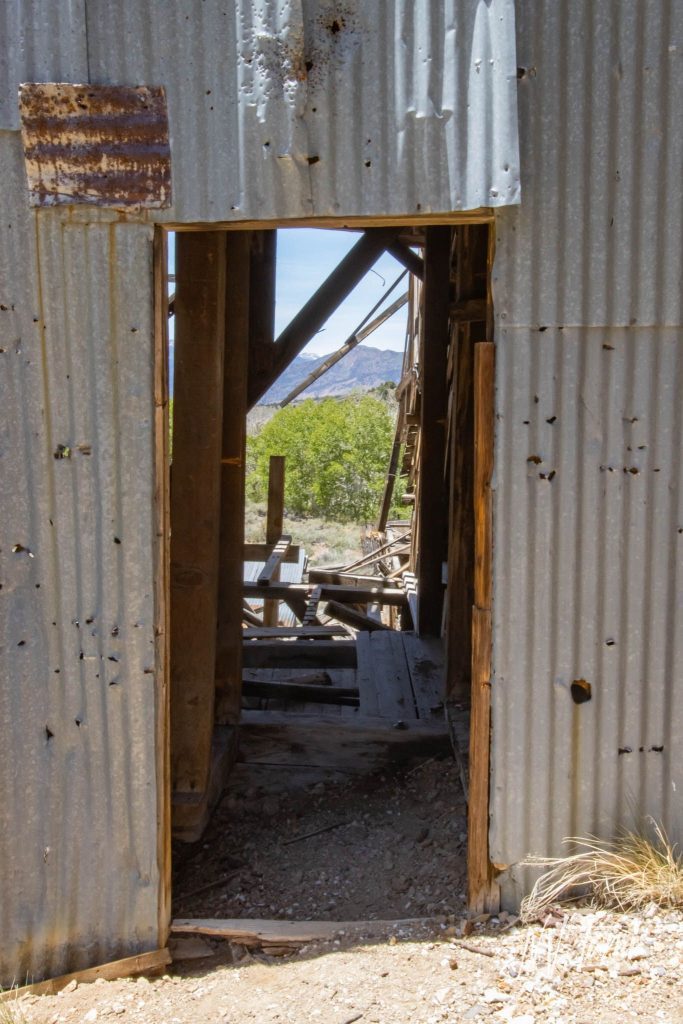
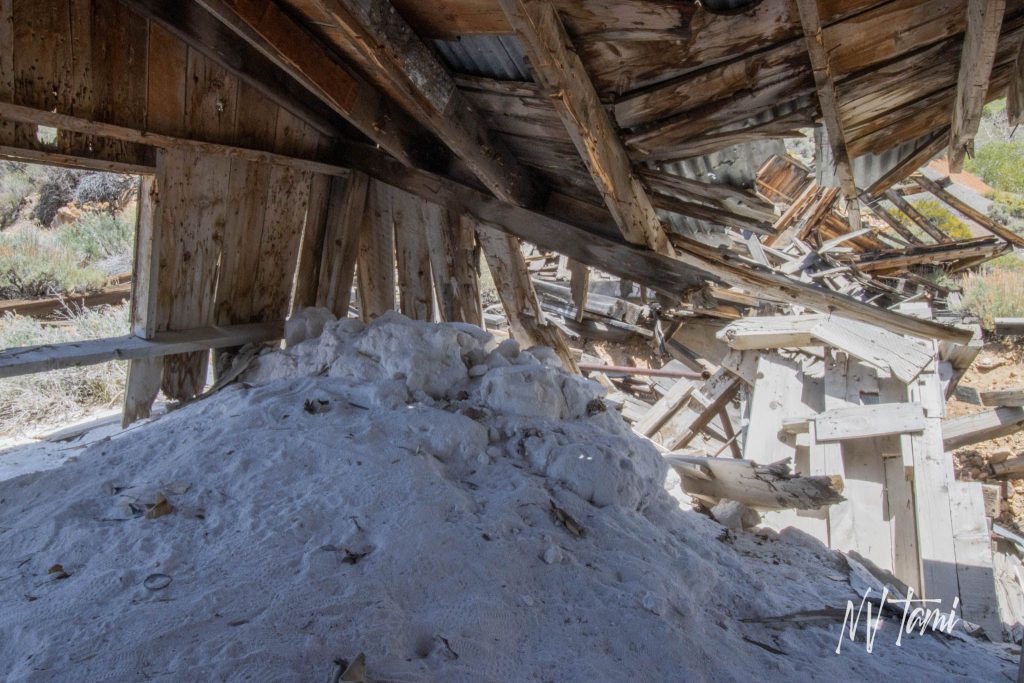
At Chemung, cyanide was used to extract gold from the ore. Ore was crushed into a powder and added to tanks containing sodium cyanide. Lime was added to maintain a high pH, preventing the release of toxic cyanide gas. This process formed a “pregnant” solution that contained the valuable metals. Zinc was then added to precipitate the gold, silver, and copper into a solid form. This was melted and poured into ingots to be sent out for further refining.
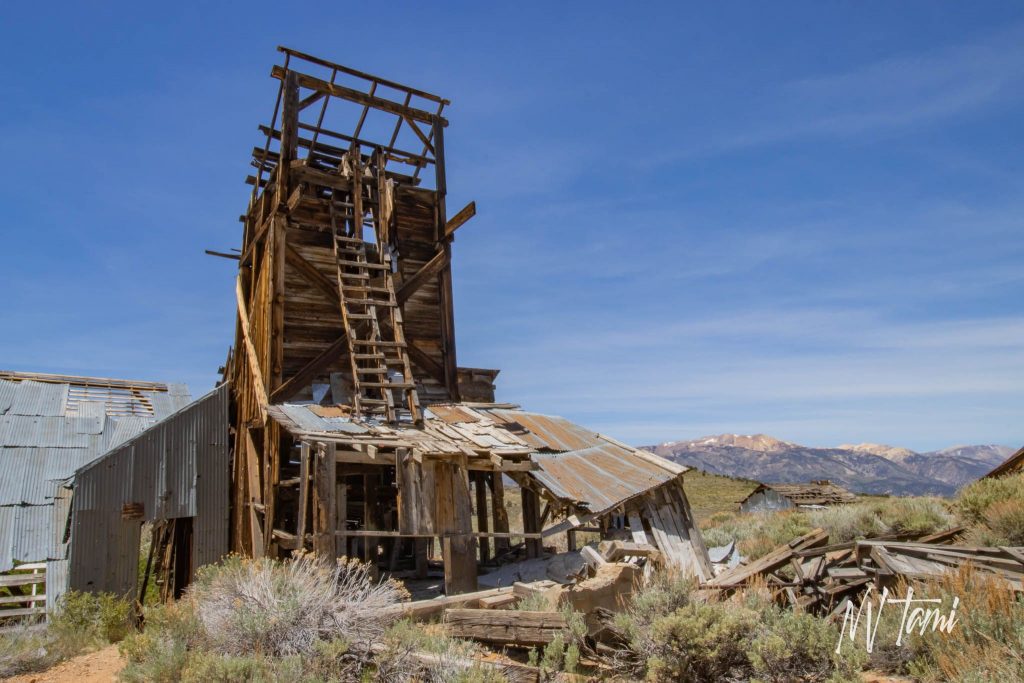
Chemung also processed ore using flotation. Crushed ore was added to tanks containing pine and other oils. Air was bubbled from below and created a froth to which the gold stuck. Canvas-covered wheels rotated which collected and dried the gold bubbles.

Legend says the owner of the mill fell or was pushed down a mine shaft. Some say his spirit still haunts Chemung, but in a twist, only on Saturday nights.
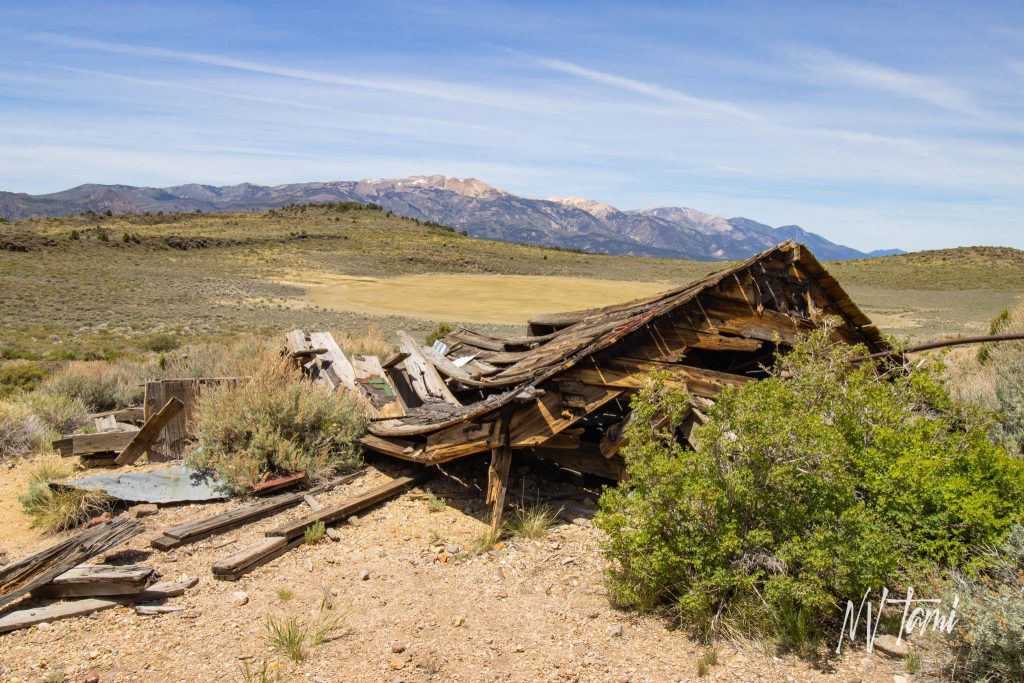
The townsite of Chemung was in the trees below the mill. Rattlesnakes and ticks have been bad so we didn’t want to tromp through sagebrush and aspens.
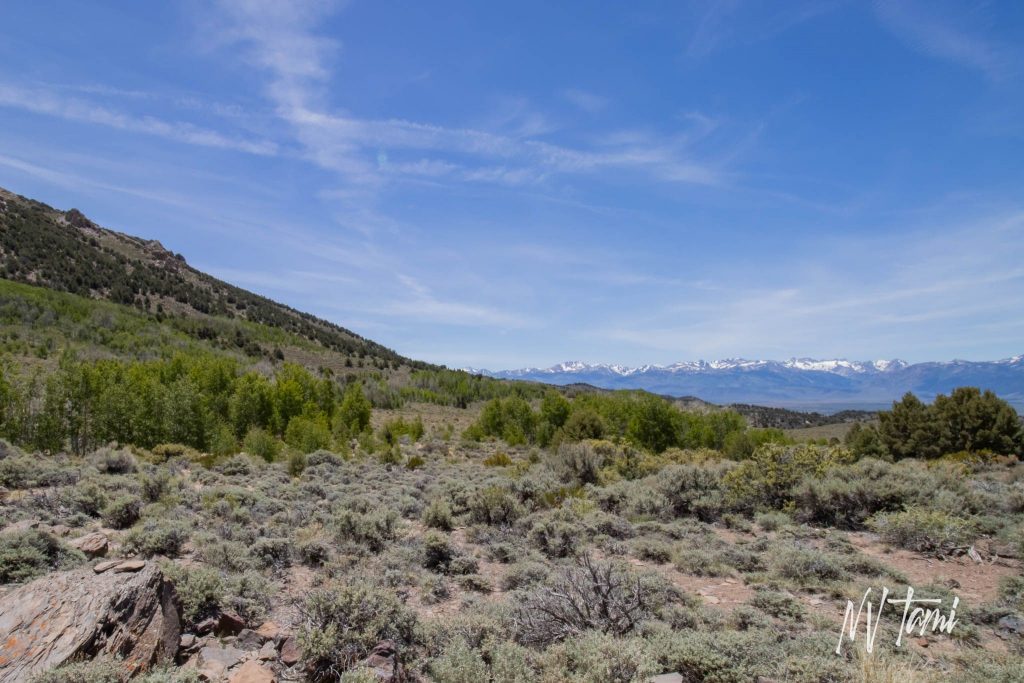
Surprisingly, cyanide is not the largest concern in old mine sites. It is unstable when exposed to heat, light and water and rapidly breaks down into relatively harmless products. While one should be wary of any unusual substances found around mines, heavy metals including mercury and arsenic found in tailings, contaminated water, nail-filled debris, unstable structures and the mines themselves are often the source of greater danger.
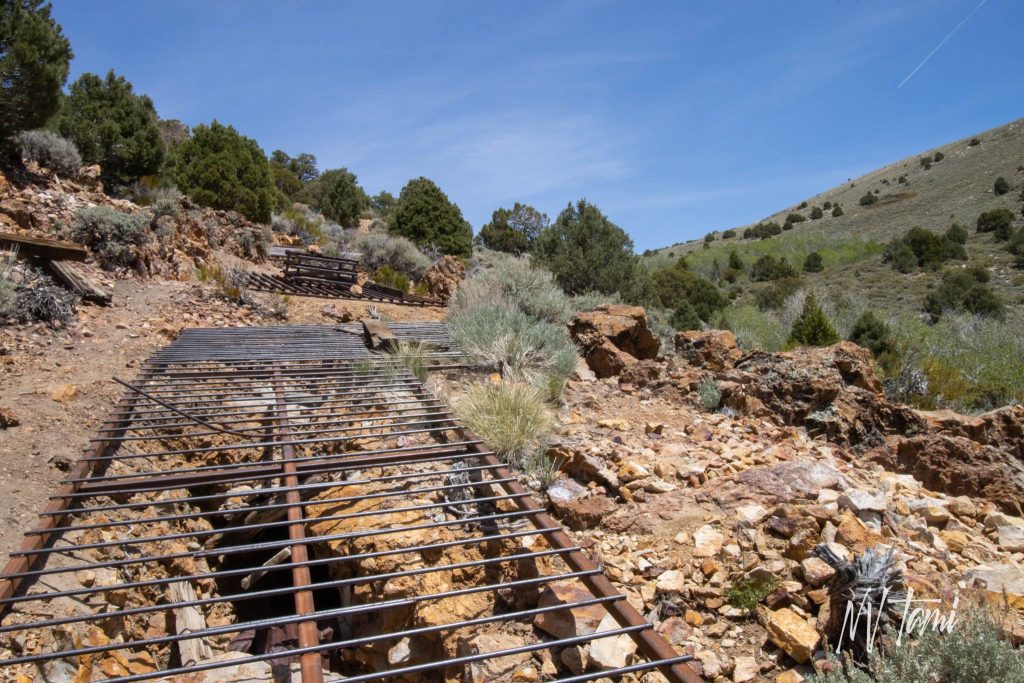
Abandoned mines are often sealed off or grated, but not always. They are dangerous workplaces that claimed the lives of many experienced miners and pose an enduring threat to the curious. They cut through strata, load bearing formations, toxic mineral deposits and can house innumerable hazards from rattlesnakes to unstable explosives and radon. Unlike caves, old mines are unmaintained works of engineering designed solely for extracting ore. They are not recreational sites. (Besides, would you ride a roller coaster that’s had no maintenance for 50 years?)
Stay Out – Stay Alive!
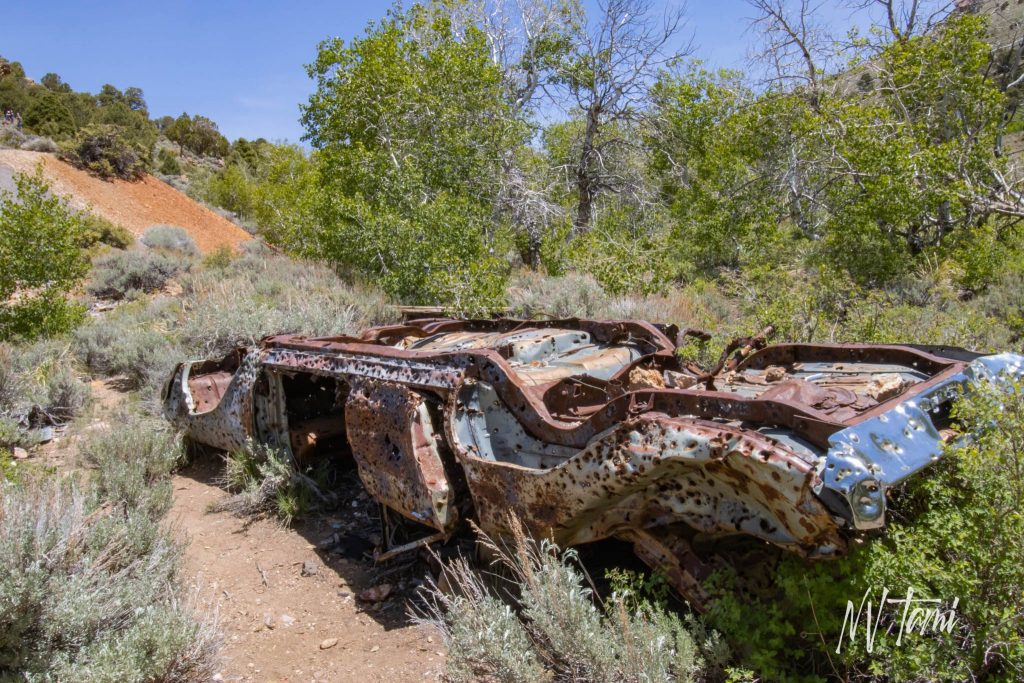


As a fun bonus, I found a beautiful painting in one of the buildings! It hadn’t been there long as it was dust-free. It’s part of the abandoned art movement where artists leave work for others to find, enjoy and take home if they wish.
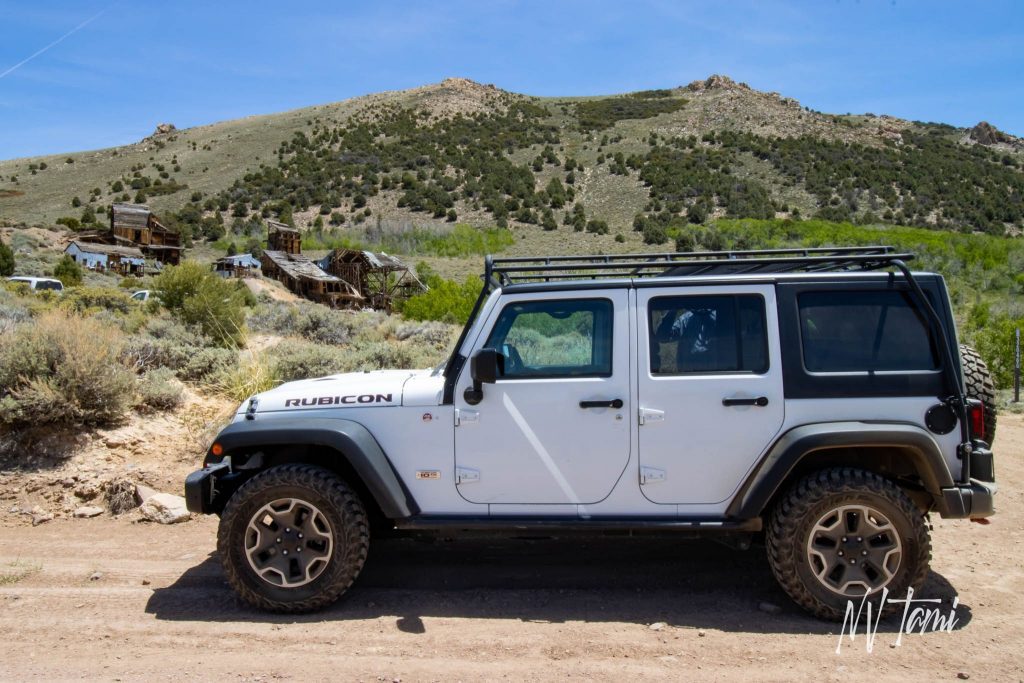
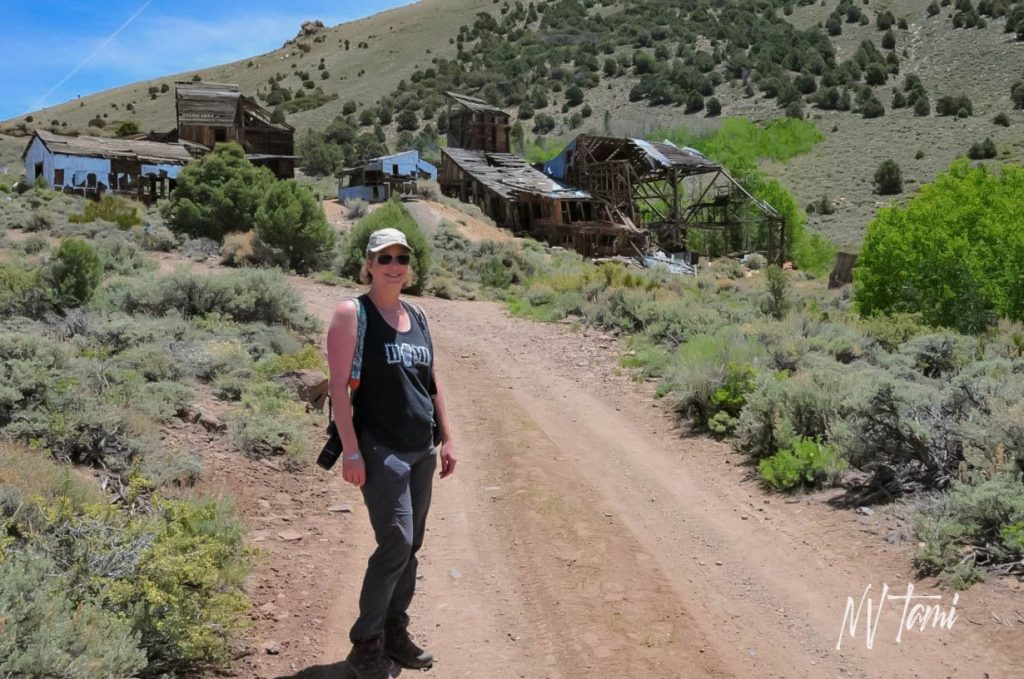

This was Rubi’s first trip! Hubby and I went with friends Stephen and Michael. Thank you Stephen for sharing your historical mining knowledge. We made a loop from Bridgeport to Chemung, Masonic, and Elbow. We planned on visiting Aurora but we didn’t have enough time to explore the area.
Visited 10-31-2020, 6-14-2020
References
- Abandoned America: Chemung Mine
- Abandoned Spaces: Haunted and Abandoned: Chemung Mine, California
- Destination 4×4: Chemung Mine
- Ghost Towns: Chemung Mill
- Gold Explorers: Chemung Mill
- Massey et al. California Trails: High Sierra Region. Adler Publishing, 2006 Pages 159-163.
Steve Knight says
Wow. Great pictures and history tour. Thank you. Mike and I enjoyed your and Ralph’s company and Exploring a History. Rubi will take you guys to exciting new places.
Tami says
It was a great day!
terry says
i see the article is june 2020. there is a lot of mining structure left in the first picture which is a little surprising. know if it is still there?
Tami says
The article itself was a few years ago. I was at Masonic and Chemung a few weeks ago and it looks the same.